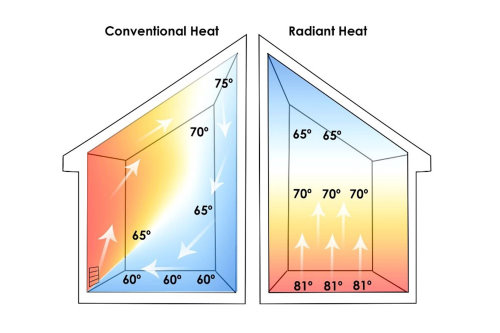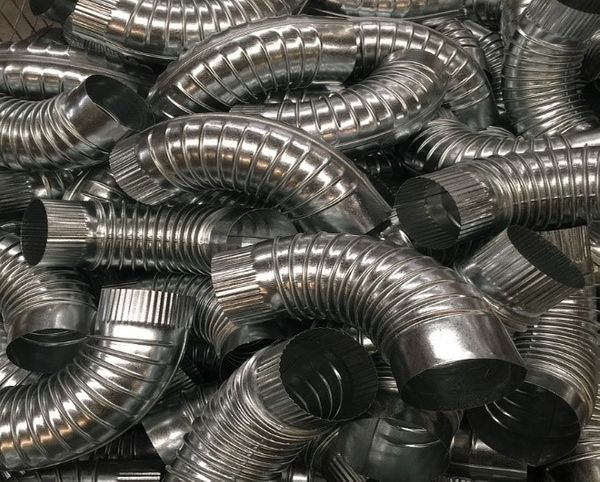Conventional Heat vs. Electric Radiant Heat

Think of the last time you were at the beach, soaking up the sun: The warmth hugging your skin, the heat radiating from the sand right beneath you. The sunshine is beaming down rays of heat, pouring warmth that flows through you. Comfort envelops your body like you are wrapped in a blanket. This is the comfort of radiant heat.
Now think of the last time you tried heating your home. Chances are, there was quite a difference.
The ongoing debate between radiant vs. forced heat continues to develop as more people discover electric radiant floor heating. Until recently, many people were unaware that alternatives to conventional heat systems were available. What are the differences between the two and which one is best for you?
How the Systems Operate
The glaring difference between conventional and radiant heating systems is the way that they conduct and emit heat.
Traditional HVAC systems produce heat from a furnace that gets delivered through ducts in a wall. Usually, the units are around 5 feet tall by 3 feet wide. Once the heat is generated, it gets forced through tubes and out the registers. During this transferal, heat loss often occurs. Heat leaks out of small openings in the ducts and gets misdirected, never reaching you.
Dust, debris and allergens can find their way into the pipeline, which comes out the same way that the air does.

Forced air systems can cause stratification, a sharp division between heat and cold air. The heat is generated but stays at the ceiling while cool air sits with you, in the middle and bottom of the room. When this happens, people usually turn up their thermostat to overcompensate and work overtime. Most people don't realize this results in more forced air, which causes a blowing effect. In fact, the blowing creates so much movement it cools you, like a fan. Naturally, this uses more energy.
HVAC systems average $3,000.00 conservatively. Proper ducts can be expected to lose 2undefined of your monthly energy, and an old setup can lose up to 50%. Heaters usually require burners, heat exchangers, exhaust flues, and blowers.
Electric radiant heating systems work like ovens. You control and choose the precise temperature right at the source. The element climbs in temperature slowly but steadily, then maintains it. Think about if you turned on your oven and left it open. The heat would lurk outward and hang in the air before dissipating a few feet away, like a fireplace. This is how radiant heat works, but instead of heat climbing outward, it rises upwards. It grows out of the floor and stays near the source. Since your body is in direct contact with the floor, it reaches your body first, then dissipates towards the ceiling.
There are different ways that radiant systems are set up depending on the type of flooring you install. All of them lay under the floorboards which act as buffers between you and the heat. Unlike hydronic radiant heat, most of the radiant heat is conducted through Fiberthermics® heating cables. The cable is powered by a single electrical source, so there are no extra ducts or tubes. Once the system is installed and wired by a qualified electrician, you don't see or hear it ever again. It takes up no extra space.
Complete electric radiant heating systems cost as low as $10 a square foot. That means for a living room that's 12 feet by 12 feet, you would spend around $1,440, less than half than a traditional HVAC system. The electric radiant heaters require no maintenance, cleaning, or part replacement and offer extensive warranties. Energy-efficiency is one of radiant heat's most prominent attributes. The system barely wastes any energy because it starts and ends right where you are. Although running the system usually only costs a few pennies a day, cement slab heating systems cost even less. By running it during "off-peak" hours, many utility companies will charge less. Heating the slab during these hours typically carries it through the day for 8 to 10 hours.

So, which method of heating is a better fit for your home and budget? The debate continues, but you may as well ask yourself: “Would I rather be at the cozy beach or in my current living room?”